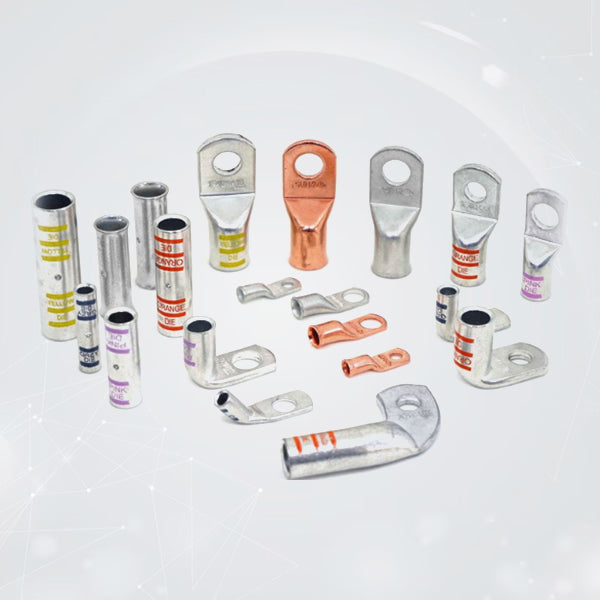
1 Gauge & 1/0 AWG Tinned Lugs: Essential Installation Tips for Reliable High-Current Connections
In the realm of electrical systems, particularly those designed to handle high currents, the integrity of connections is paramount. The choice of connectors and the precision of their installation directly influence the system's safety, efficiency, and overall reliability. 1 awg tinned lugs and 1/0 AWG tinned lugs are specifically engineered for these demanding applications, providing a robust and dependable means of terminating large-gauge cables. This guide offers essential installation tips tailored to these lugs, ensuring that professionals and enthusiasts alike can establish connections that are both secure and long-lasting.
Understanding 1 Gauge & 1/0 AWG Tinned Lugs
Before delving into the intricacies of installation, it's crucial to establish a clear understanding of the specific types of lugs in question.
- 1 awg tinned lugs: These lugs are designed to terminate 1 AWG cables. The "AWG" designation, standing for American Wire Gauge, is a standardized system for measuring wire diameter. 1 AWG cables are commonly used in applications involving moderate to high current flow, such as battery connections, inverter wiring, and power distribution in vehicles or boats.
- 1/0 AWG tinned lugs: Also frequently referred to as 2/0 terminal lug, these lugs are engineered for 1/0 AWG cables. This cable size is larger than 1 AWG and is employed in applications characterized by even higher current demands, such as connecting large battery banks, powering heavy-duty equipment, or establishing connections in industrial settings.
Both 1 gauge tinned lugs and 1/0 AWG tinned lugs share a crucial feature: the "tinned" designation. This indicates that the copper lug itself is coated with a layer of tin. This tin plating serves a vital purpose: enhancing corrosion resistance. In many applications where these lugs are used, exposure to moisture, chemicals, or other environmental factors is unavoidable. The tin coating acts as a protective barrier, preventing oxidation of the copper and ensuring a reliable connection over the long term.
The Importance of Proper Installation
The significance of proper installation of 1 gauge tinned lugs and 1/0 AWG tinned lugs cannot be overstated. The consequences of a poorly executed connection can range from reduced system efficiency to dangerous electrical hazards.
- Safety: In high-current systems, safety is the foremost concern. Incorrectly installed lugs can lead to a cascade of problems. Loose connections generate excessive heat due to increased resistance. This heat can melt insulation, damage equipment, and, in extreme cases, ignite surrounding materials, posing a significant fire risk. Furthermore, arcing, the flow of electricity through the air between two conductors, can occur at loose connections, creating a fire hazard and potentially damaging equipment. Proper installation, ensuring a tight and secure connection, is paramount to mitigating these risks.
- Efficiency: Electrical efficiency is directly tied to the resistance of the connections. A well-executed connection minimizes resistance, allowing current to flow freely with minimal energy loss. Conversely, a poorly installed lug introduces resistance, impeding current flow and causing energy to be dissipated as heat. This wasted energy reduces the overall efficiency of the system, requiring more power to achieve the same result. In high-current applications, even small inefficiencies can translate to substantial energy waste.
- Reliability: The reliability of an electrical system hinges on the dependability of its connections. Properly installed 1 gauge tinned lugs and 1/0 AWG tinned lugs provide a stable and consistent connection, minimizing the risk of intermittent failures or complete connection loss. These failures can disrupt operations, cause downtime, and necessitate costly repairs. A robust and reliable connection ensures continuous and uninterrupted power flow.
Installation Tips for 1 Gauge & 1/0 AWG Tinned Lugs
Achieving a reliable connection with 1 gauge tinned lugs and 1/0 AWG tinned lugs requires meticulous attention to detail and adherence to best practices. Here's a step-by-step guide:
1. Cable Preparation: The first step is to prepare the cable correctly.
- Stripping: Carefully strip the insulation from the end of the cable to the appropriate length. The ideal strip length typically corresponds to the barrel length of the lug, ensuring that the entire conductor is in contact with the lug. Precision is crucial here. Stripping too much insulation exposes excessive wire, increasing the risk of shorts. Stripping too little insulation results in insufficient contact, leading to increased resistance. Use a wire stripper tool to avoid nicking or cutting the individual wire strands. Damaged strands reduce the cable's current-carrying capacity and increase resistance.
- Cleaning: Ensure that the exposed cable strands are clean and free of any dirt, grease, or corrosion. Contaminants can impede conductivity and compromise the integrity of the connection. If necessary, use a wire brush or cleaning solution to remove any debris.
2. Lug Selection: Choosing the right lug is paramount.
- Size: Select a lug that is precisely matched to the cable size. Using an undersized lug will restrict current flow and create a point of excessive heat. An oversized lug may not provide a secure crimp.
- Quality: Opt for high-quality 1 gauge tinned lugs or 1/0 AWG tinned lugs from a reputable manufacturer. The lug should be constructed from high-conductivity copper and have a uniform tin coating. Avoid using damaged or corroded lugs.
3. Crimping: Crimping is the most common and effective method for attaching these lugs.
- Tool: Use a crimping tool specifically designed for the lug size. Hydraulic crimpers are often preferred for larger gauge lugs, as they provide the necessary force for a secure and gas-tight crimp.
- Technique: Position the lug and cable correctly in the crimping tool. Apply firm, even pressure until the crimp is complete. Follow the tool manufacturer's instructions for the specific crimping procedure. A proper crimp creates a metallurgical bond between the lug and the cable, ensuring optimal conductivity.
4. Inspection: After crimping, thoroughly inspect the connection.
- Compression: Visually verify that the lug is uniformly compressed around the cable. There should be no gaps or loose strands.
- Pull Test: Perform a gentle pull test to ensure the mechanical strength of the connection. The lug should not move or come loose.
5. Protection: Consider adding an extra layer of protection.
- Heat Shrink Tubing: Apply heat shrink tubing over the connection to provide insulation and environmental protection. This is particularly beneficial in harsh environments where moisture or chemicals are present.
Technical Details Recap
- Lug Types: 1 awg terminal lug, 1/0 AWG tinned lugs (2/0 terminal lug)
- Material: Tinned Copper
- Crimping Tool: Hydraulic Crimper (Recommended)
By adhering to these installation tips, professionals and enthusiasts can ensure reliable and safe high-current connections using 1 gauge tinned lugs and 1/0 AWG tinned lugs. A well-executed connection is the foundation of a robust and efficient electrical system.

